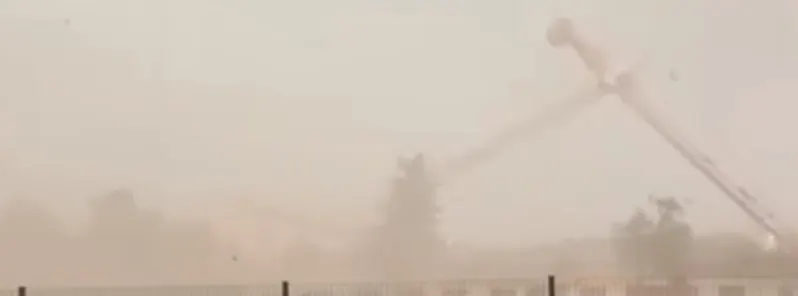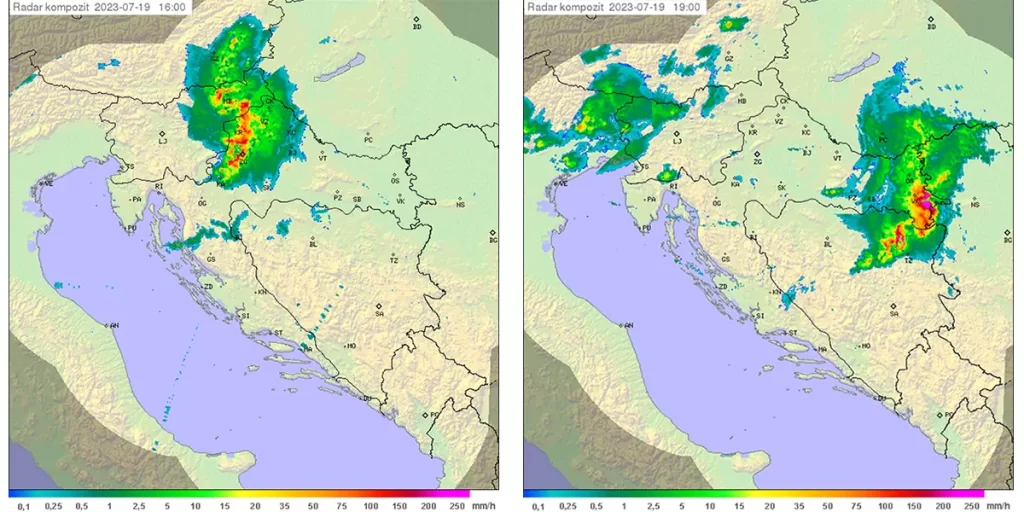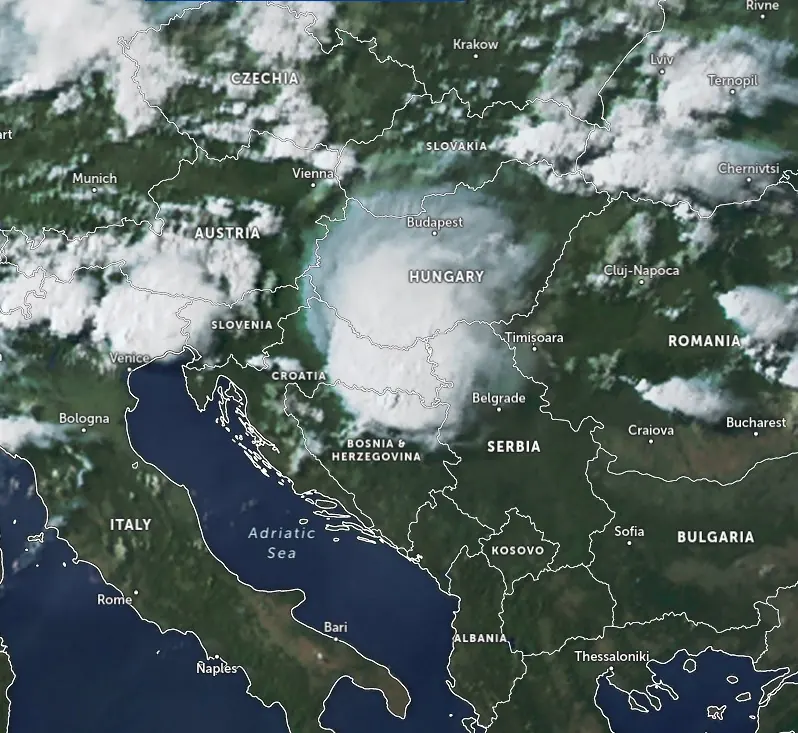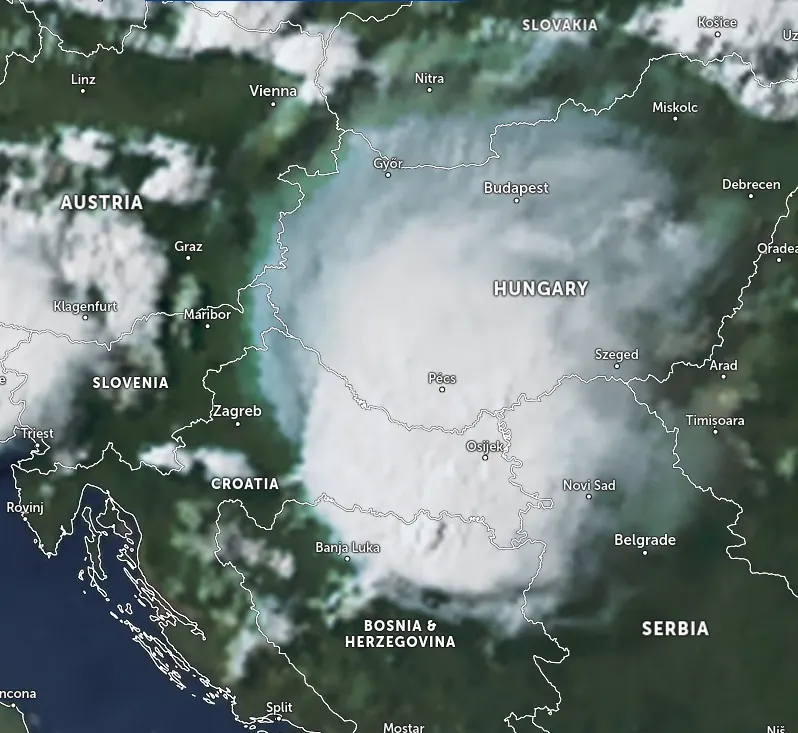Rare, powerful thunderstorm in Croatia, likened to Texas-style weather, claims four lives, leaves over 2 000 injured

A powerful, fast-moving thunderstorm swept over northern Croatia on July 19, 2023, bringing winds up to 180 km/h (112 mph) and leaving massive damage in its wake. According to preliminary analyses, this event was one of the most severe thunderstorms in Zagreb’s recorded history. Unfortunately, the storm claimed the lives of 4 people and left over 2 000 others injured.
A highly destructive thunderstorm moved through Croatia on July 19, 2023, leaving significant damage and casualties in its path. The storm, which originated in northern Italy and Austria, moved at an alarming speed of approximately 70 km/h (43.5 mph), impacting areas from Zagreb to Slavonski Brod and Županja with tremendous force.
Meteorologists from the Croatian Meteorological and Hydrological Service (DHMZ) reported the storm was part of a larger mesoscale convective system, within which supercell thunderstorms with notable rotation were identified.
Wind speeds between 90 – 115 km/h (56 – 72 mph) were recorded at Franjo Tuđman Airport Zagreb. This ranks them among the strongest recorded in the Zagreb area.
According to preliminary analyses, this event was one of the most severe thunderstorms in Zagreb’s recorded history, DHMZ meteorologists said.

Winds further intensified as the storm moved through eastern regions of the country, with an unprecedented 180 km/h (112 mph) registered in the city of Županja.
The storm also carried with it a torrential downpour. In a span of 10 minutes, rainfall measurements varied from 20 to 35 mm (0.8 to 1.4 inches).
As the thunderstorm continued east, it affected numerous other cities with the same ferocity, notably Lipik, Slavonski Brod, and Županja. Nebojša Subanović, a meteorologist, compared the storm to something more typical of Texas than Europe due to its intensity.
The storm, unfortunately, resulted in four fatalities — 2 in Zagreb, one near Nova Gradiška, and one in Tovarnik. Three victims were killed by falling trees in separate incidents, and a firefighter from Slavonia lost his life during post-storm repair efforts.
Assessments of the overall damage are ongoing. However, eyewitness reports provide a glimpse into the severity of the storm’s impact. Nada Radišić from Slavonski Brod described the extensive devastation to trees and her neighborhood, citing damage to cars from fallen rooftops and the loss of trees she had known since her childhood. “The wind was breaking the branches as if they were made of paper,” she said.


Branko Grisogono, a renowned climatologist, geophysicist, and professor at the Faculty of Science and Mathematics in Zagreb, characterized the recent storm as an unprecedented event for Slavonia and central Croatia. He recalls a similar storm that occurred in 2008, hitting Zagorje and the wider Krapina area, where a supercell cumulonimbus caused extensive damage. This storm was known for toppling trees, ripping roofs off buildings, and decimating most crops with hailstones ranging from the size of hazelnuts to small walnuts.
“Yesterday’s storm exhibited similar characteristics,” explained Grisogono. “It was a complex mix of convective storms that can’t easily be categorized because the storm system transitioned between different behavior regimes. Initially, it was a mesoscale convective system, which at its peak in its southernmost part displayed significant features of a supercell cumulonimbus.”
Grisogono continued to illustrate the distinct nature of a supercell cumulonimbus, which is the only type of convective storm capable of creating its own rotation. These storms are also unique because their strong upper-level winds can separate the downdrafts and updrafts, preventing them from mixing. This dynamic is likened to the separate flows in a heart’s ventricles, atria, veins, and aortas that prevent the mixing of oxygenated and deoxygenated blood, contributing to the system’s longevity and power.
References:
1 O olujnom vremenu nad kontinentalnom Hrvatskom 19. srpnja 2023. – DHMZ – July 20, 2023
2 DHMZ objavio veliko priopćenje o strašnoj oluji i novu prognozu – Index – July 20, 2023
3 Klimatolog za Index: Ovo jučer je bio presedan. U Hrvatskoj možemo očekivati tornado – Index – July 13, 2023
4 Analiza superoluje koja je poharala sjeverozapadnu Hrvatsku – Meteo Info – July 20, 2023
Featured image credit: Index (reader submitted)

## Comment SPAM Protection: ShieldPRO marked this comment as “Pending Moderation”. Reason: Human SPAM filter found “123@” in “author_email” ##
The metric system is not equal to the imperial system. 180 km=111 mph. Your consistent sensationalism of weather events contributes to the rejection of prophecy in general and that we’re approaching the end of the age specifically. How can the Lord be pleased with that? Maranatha.
You are wrong.